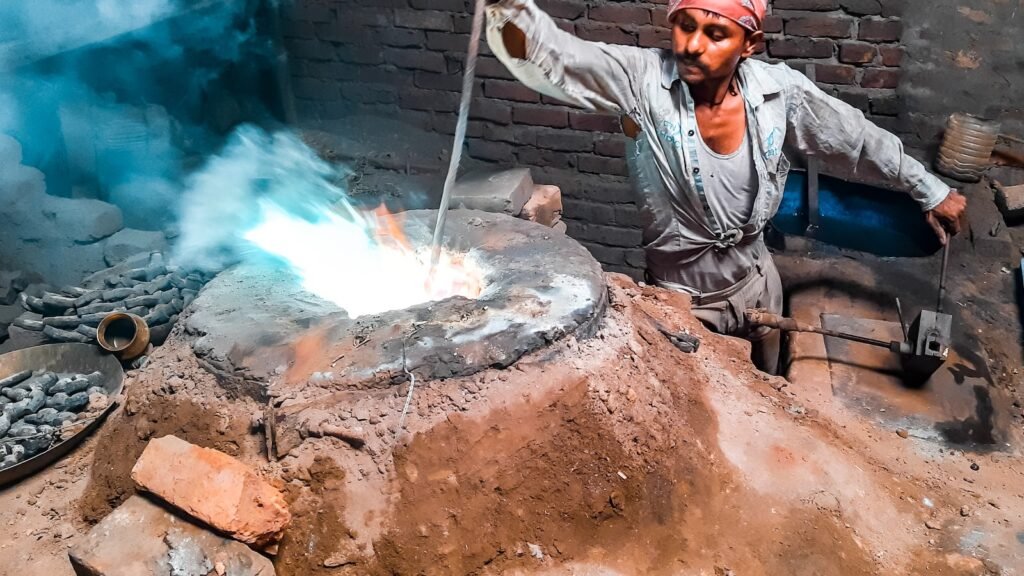Metal stamping has revolutionized the manufacturing industry. But what exactly is modern metal stamping, and why is it crucial in today’s industrial landscape? Dive into this comprehensive guide to understand the nuances and advancements of this pivotal technology.
Modern metal stamping refers to the processes and techniques used to shape, cut, and form metal sheets into specific designs using advanced machinery and tools, offering precision, efficiency, and versatility in manufacturing.
Discover the various methods, benefits, and applications of metal stamping technologies in the sections below.
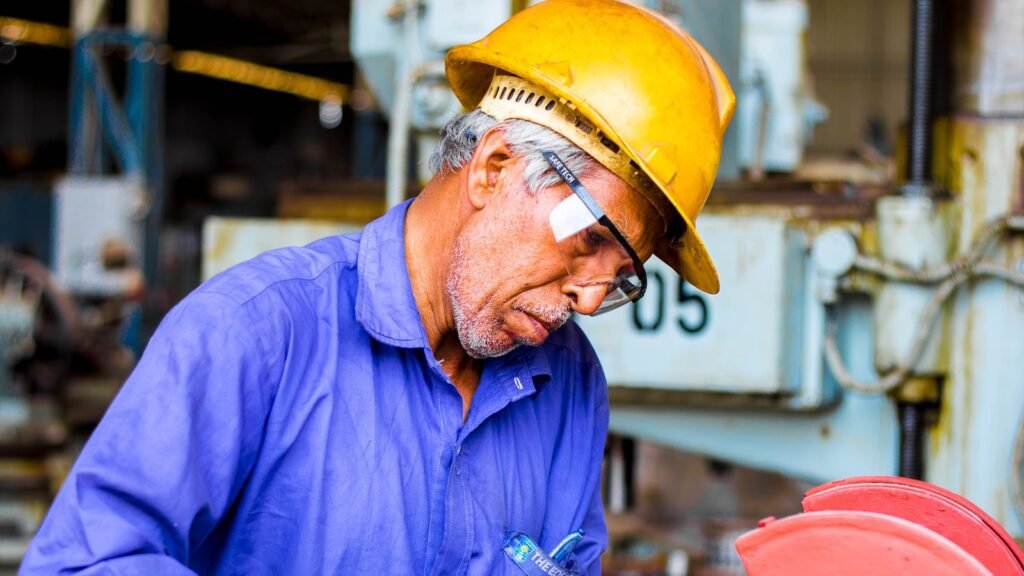
History of Metal Stamping
Metal stamping, as a technique, has roots that trace back centuries. Its evolution has been a testament to human ingenuity and the relentless pursuit of manufacturing perfection.
Origins and Early Methods
The origins of metal stamping can be found in ancient civilizations. Early blacksmiths and metalworkers used rudimentary tools and techniques to shape metals into desired forms. These artisans would use hammers and simple dies to pound metal sheets or pieces into shapes for tools, weapons, and ornamental objects. The process was labor-intensive, requiring both skill and physical strength. Each piece was unique, bearing the marks of its creator.
Evolution Over the Decades
As time progressed and technology advanced, the methods of metal stamping evolved. The Industrial Revolution in the 18th and 19th centuries marked a significant turning point. With the advent of steam power and mechanized equipment, factories began to emerge, leading to the development of more sophisticated metal stamping machines.
By the 20th century, the introduction of hydraulic and electric presses transformed the metal stamping industry. These machines could exert immense pressure, allowing for more intricate designs and tighter tolerances. Automation and computerization further refined the process in the latter half of the century. Today, modern metal stamping techniques utilize advanced machinery, CAD software, and precision tooling to produce consistent, high-quality parts at scale.

Types of Metal Stamping Techniques
Metal stamping is a diverse field, encompassing a range of techniques tailored to different applications and requirements. Here’s a breakdown of some of the most common metal stamping techniques used in the industry today:
- Progressive Stamping This method involves feeding a metal strip through a series of stations, each performing a specific operation. The final product is produced in a sequential manner, making it ideal for high-volume production.
- Fine Blanking Fine blanking is a precision stamping process that produces parts with smooth edges. It uses a triple-action press, ensuring clean cuts and superior part flatness.
- Deep Drawing This technique involves pulling a sheet metal blank into a die by a punch, forming it into a shape. It’s commonly used for creating deep, hollow parts like cups or cans.
- Transfer Stamping In this method, individual blanks are transferred from one station to the next using mechanical fingers, allowing for complex shapes and designs.
- Compound Die Stamping This process uses a single cutting die to perform multiple cuts, bends, or other operations in a single stroke, making it efficient for simpler parts.
- Fourslide Stamping A complex process that uses horizontal alignment, it’s ideal for producing intricate parts with bends and twists. The fourslide machine can perform multiple tasks simultaneously.
- Short-Run Stamping Designed for projects that don’t require large quantities, this method is cost-effective for small batch production.
- Micro Stamping As the name suggests, this technique is used for producing extremely small parts with precision, often used in medical and electronics industries.
- Precision Metal Stamping This is a broader category that emphasizes tight tolerances and high-quality finishes. It’s used in industries where precision is paramount, such as aerospace and automotive.
Each of these techniques offers unique advantages and is chosen based on the specific requirements of the project. Understanding the nuances of each method ensures the best results for any given application.

Advancements in Metal Stamping Machinery
The metal stamping industry has witnessed significant advancements over the years, particularly in machinery. These advancements have not only increased efficiency but also enhanced precision, allowing for the creation of more complex parts.
Modern Presses and Their Capabilities
Modern metal stamping presses are a far cry from the rudimentary machines of the past. Today’s presses are equipped with advanced features that enhance their performance:
- High-Speed Operation: Many modern presses can operate at incredibly high speeds, producing thousands of parts per hour without sacrificing precision.
- Precision Control: With computerized controls and advanced sensors, modern presses can maintain tight tolerances, ensuring each part is consistent with the last.
- Versatility: Modern presses can handle a variety of materials, from thin foils to thick plates, and can be adapted for different stamping techniques.
- Safety Features: Enhanced safety mechanisms, such as light curtains and emergency stops, ensure operator safety during production.
Automation in Metal Stamping
Automation has revolutionized the metal stamping industry:
- Robotic Arms: These are used for tasks like feeding material into the press, moving parts between operations, and even for intricate tasks like welding or assembly.
- Computerized Control Systems: These allow for precise control over every aspect of the stamping process, from material feed rates to press speeds, ensuring optimal performance.
- Automated Inspection: Advanced cameras and sensors can inspect parts in real-time, detecting defects or inconsistencies and ensuring quality control.
- Material Handling Systems: Automated systems can manage the storage, retrieval, and transportation of materials, streamlining the production process.
The integration of automation in metal stamping has not only increased production rates but has also reduced errors, ensuring higher quality parts and more efficient operations.
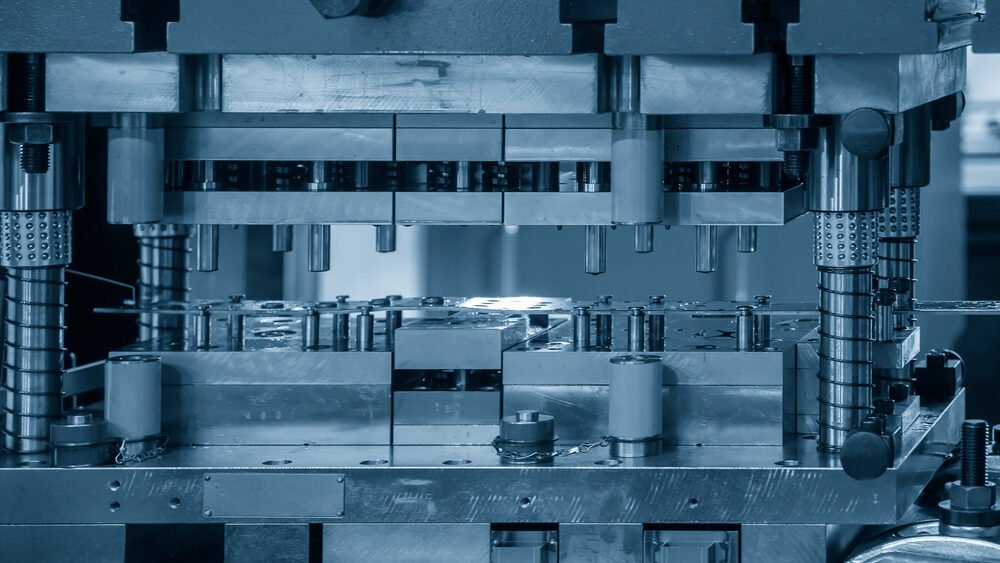
Materials Used in Metal Stamping
The choice of material is pivotal in metal stamping, as it directly influences the quality, strength, and functionality of the final product. Over the years, a variety of metals have been employed, each with its unique properties and applications.
Common Metals and Their Properties
- Steel: A widely used material known for its strength and durability. There are various types of steel, including stainless steel, which offers corrosion resistance, and carbon steel, known for its malleability and strength.
- Aluminum: Lightweight and corrosion-resistant, aluminum is often used for its excellent strength-to-weight ratio. It’s malleable, making it suitable for intricate designs.
- Copper: Known for its excellent electrical conductivity, copper is often used in electrical components. It’s also malleable and offers good corrosion resistance.
- Brass: An alloy of copper and zinc, brass is known for its golden appearance and is often used for decorative items. It offers good corrosion resistance and is easy to machine.
- Bronze: An alloy of copper, typically with tin, bronze is strong and corrosion-resistant. It’s often used for bearings, bushings, and other wear-resistant parts.
- Nickel: This metal offers excellent corrosion resistance and is often used in environments where durability and resistance to harsh conditions are required.
Choosing the Right Material for Specific Applications
The choice of material often depends on the specific requirements of the application:
- Strength Requirements: For applications that require high strength, materials like steel or certain alloys might be preferred.
- Electrical Conductivity: For electrical components, metals like copper or brass are often chosen for their excellent conductivity.
- Corrosion Resistance: In environments where corrosion is a concern, materials like stainless steel, aluminum, or nickel might be preferred.
- Aesthetic Considerations: For decorative items, metals like brass or bronze, known for their distinct appearances, might be chosen.
- Cost Considerations: Budget constraints might influence the choice of material. For instance, aluminum might be chosen over other metals for its cost-effectiveness in certain applications.
Understanding the specific needs of an application and the properties of various metals is crucial in selecting the right material for metal stamping.
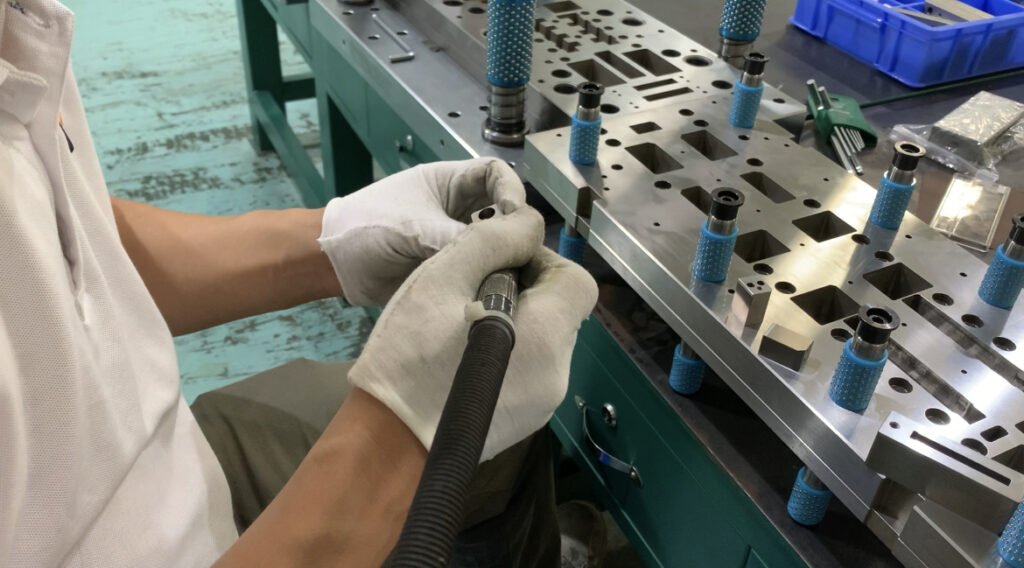
Benefits of Modern Metal Stamping
Modern metal stamping has come a long way from its humble beginnings. With the integration of advanced machinery, automation, and innovative techniques, this manufacturing process offers a plethora of benefits that cater to diverse industrial needs.
Precision and Accuracy
- Advanced Machinery: Modern stamping presses, equipped with computerized controls and sensors, ensure that each part is stamped with utmost precision, maintaining tight tolerances.
- Consistency: Automation ensures that each part is consistent with the last, reducing the margin of error and ensuring uniformity across large production runs.
- Reduced Human Error: With computerized systems overseeing the process, the chances of human-induced errors are minimized.
Cost-effectiveness
- Mass Production: Modern metal stamping techniques allow for the production of large volumes of parts in a short time, leading to economies of scale.
- Reduced Waste: Precision stamping ensures optimal use of materials, reducing waste and leading to cost savings.
- Less Manual Labor: Automation reduces the need for manual intervention, leading to labor cost savings.
Versatility in Design
- Adaptable Tooling: Modern machinery can be easily adapted to produce a wide range of designs, from simple shapes to intricate patterns.
- Material Versatility: Modern stamping processes can handle a variety of materials, from thin foils to thick metal plates.
- Integration with Other Processes: Modern stamping can be easily integrated with other manufacturing processes, such as welding or assembly, allowing for the creation of complex parts.
In conclusion, modern metal stamping, with its myriad of benefits, has solidified its place as a cornerstone in the manufacturing industry, offering solutions that are precise, cost-effective, and versatile.
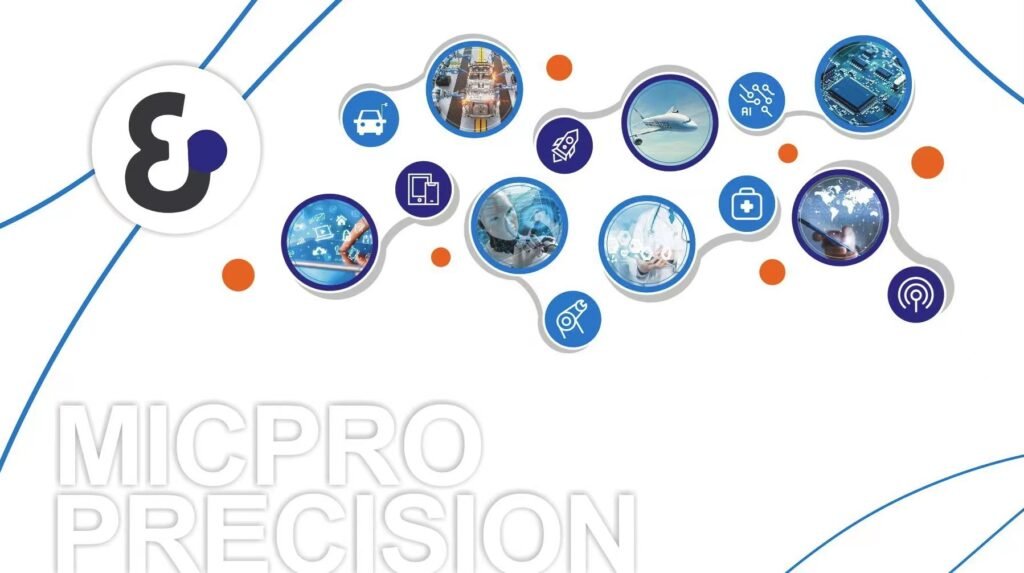
Challenges and Solutions in Metal Stamping
While modern metal stamping offers numerous benefits, it’s not without its challenges. However, with technological advancements and industry best practices, many of these challenges can be addressed effectively.
Common Issues Faced in Metal Stamping
- Material Wrinkling: During the stamping process, especially in deep drawing, materials can wrinkle due to uneven material flow.
- Die Breakage: The continuous use of dies can lead to wear and tear, resulting in breakages.
- Springback: After stamping, metals tend to revert slightly to their original shape, affecting the final product’s precision.
- Surface Defects: Imperfections, such as scratches or dents, can occur during the stamping process.
- Material Waste: Inefficient stamping processes can lead to excessive material wastage.
Technological Solutions and Best Practices
- Advanced Material Simulation: Using computer simulations, manufacturers can predict how materials will behave during the stamping process, allowing them to make necessary adjustments to prevent issues like wrinkling or springback.
- Regular Die Maintenance: Regular inspection and maintenance of dies can prevent premature breakages and ensure consistent stamping quality.
- Use of Advanced Coatings: Applying specific coatings to the stamping dies can reduce friction, minimizing surface defects on the stamped parts.
- Optimized Die Design: Modern die designs, aided by computer-aided design (CAD) software, can be optimized to reduce material waste and improve efficiency.
- Continuous Training: Ensuring that operators are well-trained and updated with the latest best practices can prevent many common stamping issues.
In essence, while challenges in metal stamping persist, the industry’s continuous evolution, coupled with technological solutions and best practices, ensures that these challenges are addressed, paving the way for efficient and high-quality production.

Applications and Industries of Metal Stamping
Metal stamping, with its versatility and efficiency, finds applications in a myriad of industries. From the cars we drive to the phones we use, metal stamped parts play a crucial role in our daily lives.
Automotive
- Components: Metal stamping is used to produce a wide range of automotive components, including body panels, engine parts, and transmission components.
- Advantages: The precision and consistency offered by modern stamping techniques ensure safety and performance in vehicles.
Electronics
- Components: Stamped parts are found in electronic devices, including connectors, terminals, and heat sinks.
- Advantages: The ability to produce intricate designs ensures the miniaturization and functionality of electronic components.
Aerospace
- Components: Aircraft components, such as brackets, housings, and engine parts, are produced using metal stamping.
- Advantages: The high precision and strength-to-weight ratio of stamped parts are crucial for aerospace applications.
NEV (New Energy Vehicles)
- Components: Battery connectors, motor housings, and other electrical components are made using metal stamping.
- Advantages: As NEVs demand lightweight and efficient components, metal stamping offers solutions that meet these requirements.
Medical
- Components: Surgical instruments, dental tools, and implantable devices often contain stamped metal parts.
- Advantages: The precision and sterility of stamped parts are vital for medical applications.
Communications
- Components: Metal stamping is used to produce connectors, antennas, and other communication device components.
- Advantages: The reliability and performance of communication devices are enhanced by precision-stamped parts.
Industrial Automation
- Components: Robot arms, sensors, and other automation equipment components are produced using metal stamping
- Advantages: The durability and precision of stamped parts ensure the smooth operation of automation systems.
In conclusion, metal stamping’s diverse applications across various industries underscore its importance in modern manufacturing, driving innovation and ensuring the functionality of countless products.
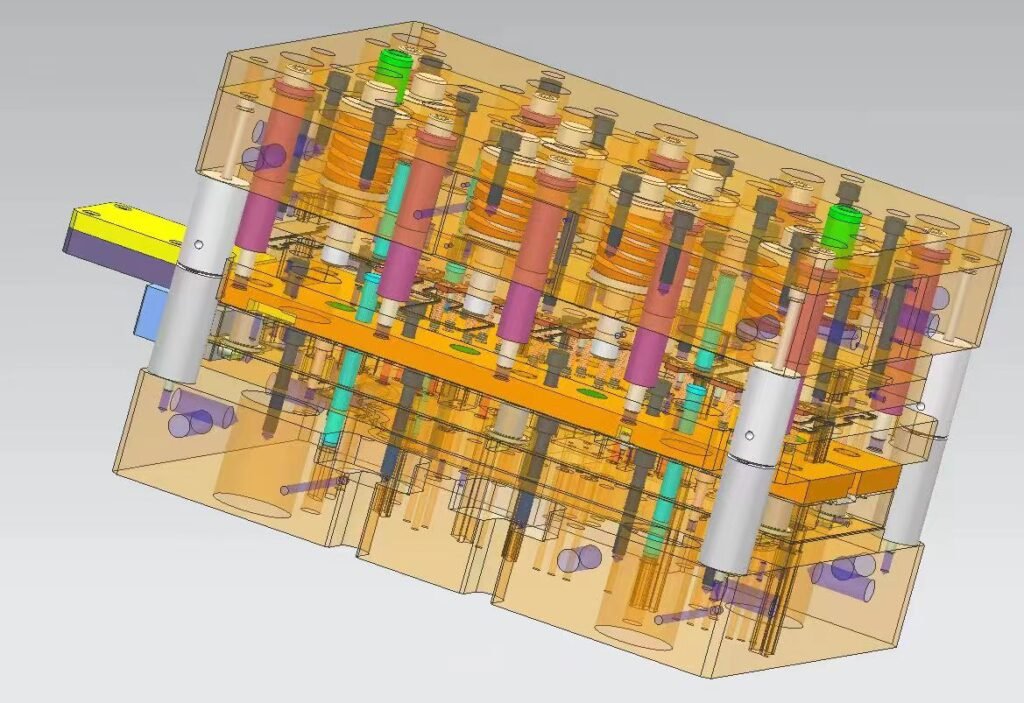
Modern metal stamping technologies have transformed the way industries operate, offering unparalleled precision and efficiency. As technology continues to evolve, the potential applications and benefits of metal stamping will only expand, solidifying its place as a cornerstone in manufacturing.

